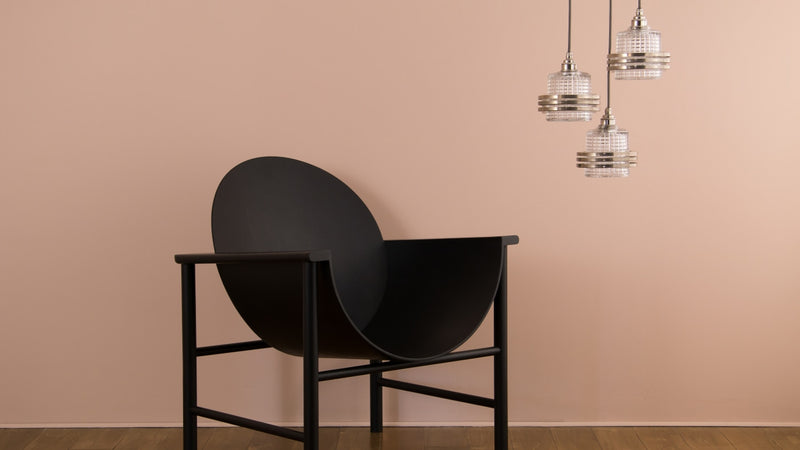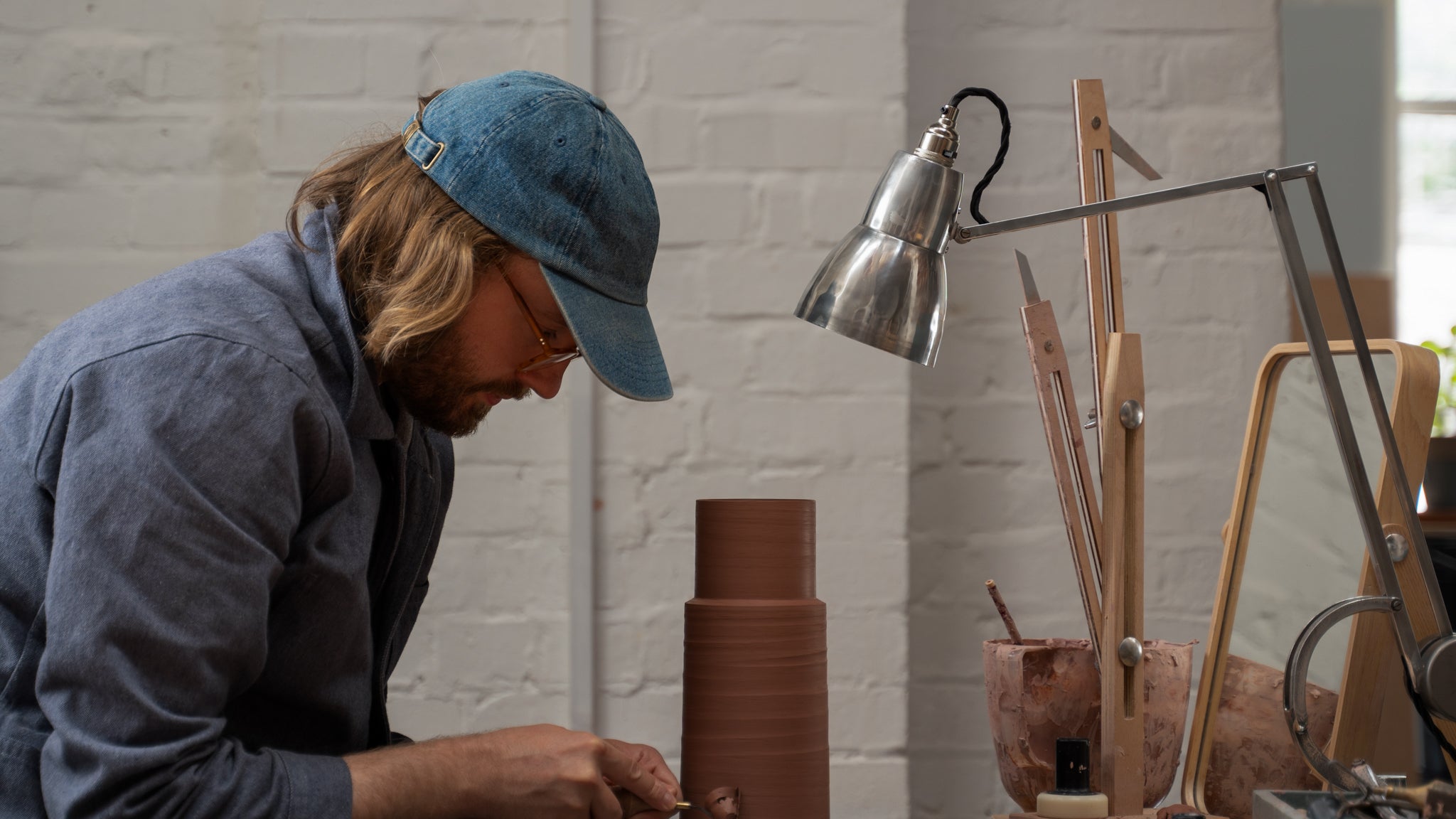
In conversation with Florian Gadsby
The Artist’s Edit: a skinflint x Florian Gadsby collaboration
As we gear up to launch The Artist’s Edit collaboration with Florian Gadsby, we caught up with the London-based ceramicist sensation to talk about the joy of vintage, and how his transparent approach to craftsmanship has earned him millions of fans.
How did you first come across us here at skinflint?
For as long as I can remember I’ve also loathed the fluorescent beams that hang above my workspace, humming and flickering, bathing everything in flat white light. I wanted something more purposeful and I thought there had to be lights out there that were well-designed and galvanising, lights that were exciting and felt at home alongside my carefully put-together pottery. They had to be antique, ideally metal and have details that made them intriguing, maybe I’m asking for too much? When I found skinflint it all clicked into place. Their lights have history, a past, they’ve been restored, saved, and given a second chance at glowing again.
Tell us about the restored original vintage light you first purchased from us…
Through becoming a potter I’ve learnt to use objects in my day-to-day life that bring me pleasure: a mug made by a close friend from Japan, sharp pottery tools crafted by people who’ve dedicated their lives to helping ceramicists make better pots, and my restored Eastern Bloc industrial pendant fits into that. Every time I see it or turn it on, I think about where it came from, the manufacturer behind it, and how it’s somehow found its way from a factory in the former Czechoslovakia, how it was salvaged, fixed up, and now it’s hanging in my studio in North London.
How important is light as a maker, particularly as a potter?
As the years have gone by and my pots have become more angular and detailed, being able to properly see what I’m doing is paramount; light to see lines, planes of clay, lips, sharp edges, feet, facets and the dark hollows hidden within the foot-rings of many of my pieces. I strive to finish my work to high degree, and if I can’t see what I’m doing, I’m lost. For the most part natural light is best, but my studio is shadowy and well, as we all know, the clouds gather quickly and rain perpetually thunders down in this country, so the need for light sources, more directional lamps and hanging pendants, to really illuminate my workspace and my potter’s wheel is crucial. I have lots of early mornings in the studio, igniting my gas kiln at 7:00 am on the dot. These early starts are peaceful, they’re the most mindful moments I probably have, so I keep the lights off apart from a few lamps switched on to create pools of warmth throughout the space and I relish in the quiet, in a workshop that’s cosy, coffee on, before the heat and noise from the kiln really begins to build.
Why are handcrafted and vintage items important to you?
I like the idea that my pots are used long into the future, they’re pieces perhaps might accompany you for the rest of your life. If they can live beyond that, then that’s even better. For a long time now, I try to buy mostly vintage clothes, especially for studio use, as they inevitably get covered in clay and worn through in patches, and poking my head around antique shops is something I’ve inherited from my father. There are certain details that we’ve lost in contemporary craft, chiefly in mass produced products, objects, clothes and our day-to-day lives. Good craftsmanship is becoming difficult to find, or perhaps it’s only really accessible to those who can afford it. Yet there’s beauty in well-crafted pieces, in the fine details, the patina, how they’ve been used, it’s what got me into making pottery to begin with, as handmade pots age with use, they chip, stain, crackle, just like clothes or an old cooking pan or a vintage light I suppose.
There’s a natural synergy between what we do restoring with vintage lights, and with you and your pottery. Tell us more…
Knowing that the objects you surround yourself with have been made by people who really care, who have dedicated their life to their craft, to weaving baskets or rolling metal, makes those pieces you end up living with and caring for, even more cherished. They are not temporary; you decide to make it part of you. Everyone has a favourite mug, even if you realise it or not, and once you start collecting and using objects that have history, or sum-up a specific style of design, or are simply the culmination of a craftsperson’s lifework, then they enter a new realm, you care not only about the object, but where they’ve come. I’m always utterly devastated when I break one of my favourite pots, but they can, sometimes, be restored and fixed, now glinting with gold, or carefully stapled together, set with metal rivets, and they’re all the more coveted for it.
Tell us more about the collaboration, and why it is a perfect fit for both of us…What is it about the lights in this collaboration that you’re particularly drawn to?
Over the past few years, I’ve mostly been looking at metal objects as stimulus for my work rather that pottery itself and you’ll notice a theme within our Artist’s Edit collection of lights… there’s a lot of metal, detailed finishes and angularity. My friend, a potter, made an interesting observation that many of my current bowl shapes look just like some of the pendants in this group when flipped upside-down, a subconscious coincidence, I’m sure. I’ve also been salvaging ‘seconds’, poorly glazed bowls, (usually my fault), with layers of iron oxide that’s brushed over them. These are then fired a second or third time, the clay vessels changing into ironclad forms that are now ‘firsts’, from lead to gold, not thrown away.
I’m fascinated by sharp, refined forms that are geometric and almost architectural, in pots, in metal, and now lights. In this collection there are lights that feed that interest I have, they link to my fascination of metalwork, and the clean-lined shapes they have fit side-by-side with my developed aesthetic.
I want to surround myself with objects that make my studio feel more like home, as after all, a craftsperson’s studio is often more fascinating than the work they create. It’s their mind unfurled into a three-dimensional space, full of failures, pots being mulled over, new ideas on paper pinned up above the wheel, tubs of glaze, sacks of raw materials and bags of clay. There’s also the dog hair, the withering plants and endless cardboard boxes, and then there’s the lights, the furniture, the kilns. These lights that have been so meticulously restored by skinflint are now a fixture in my space that I hope will accompany me as long as I live.
What’s next on the horizon for Florian Gadsby…?
The last couple of years have been busy, in the best of ways, but writing a book kept me away from the studio, and as time goes by, I find myself with increasingly less time on the wheel. As a result, this year, and next, I’ve been trying to carve out more hours creating. This time is so precious and inevitably, running a one-man operation means I spend more hours than I’d like to admit doing other tasks. I get irritable when I’m not actively making pots, so more of that to keep me topped up is a must. There’s an exhibition or two on the horizon and there’s the possibility of another book, despite everything I just wrote above, writing ‘By My Hands: A Potter’s Apprenticeship’, has led to meeting so many people who’ve been following me since I was a lowly apprentice and those who’ve become potters after watching my films on YouTube. These encounters have reminded me how important it is to find time away from the workshop, to talk with equally minded, creative craftspeople and artists. I never thought photographing pottery and writing about it would lead to a place like this, but I’m immensely grateful it has.
Explore The Artist’s Edit collection of vintage lights and head over to Instagram to enter our skinflint x Florian Gadsby giveaway!
Photography: Florian Gadsby and Oliver Bury
www.floriangadsby.com
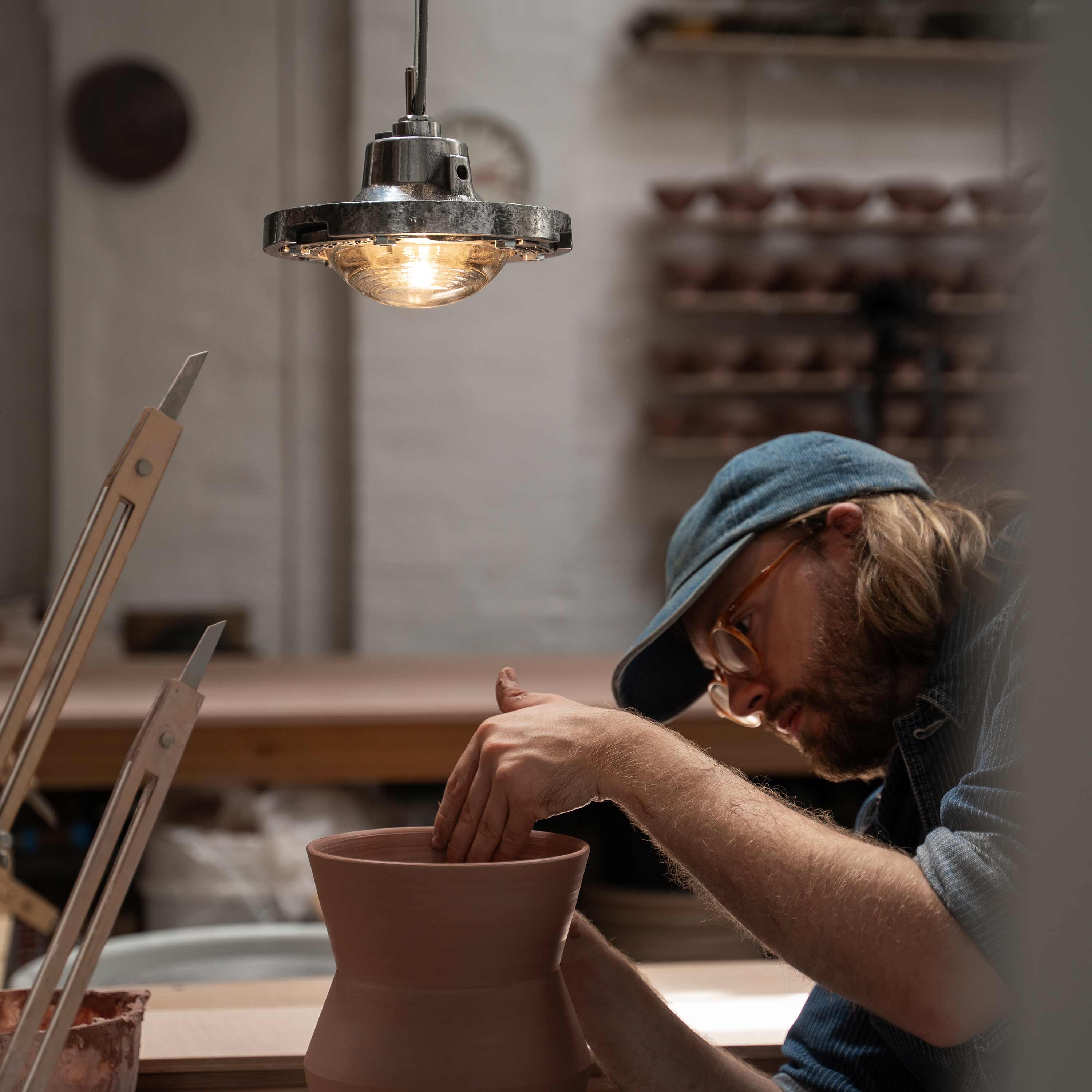
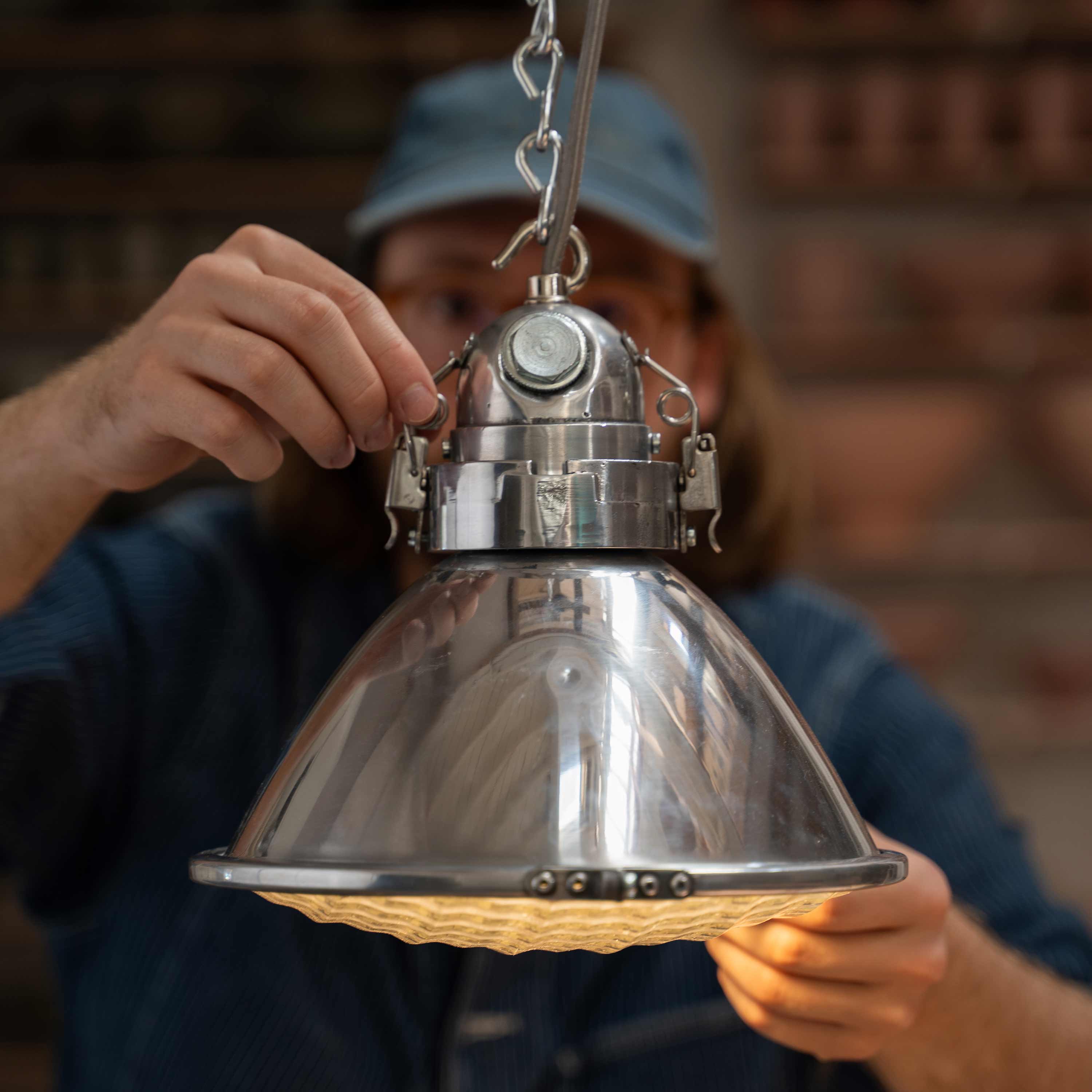
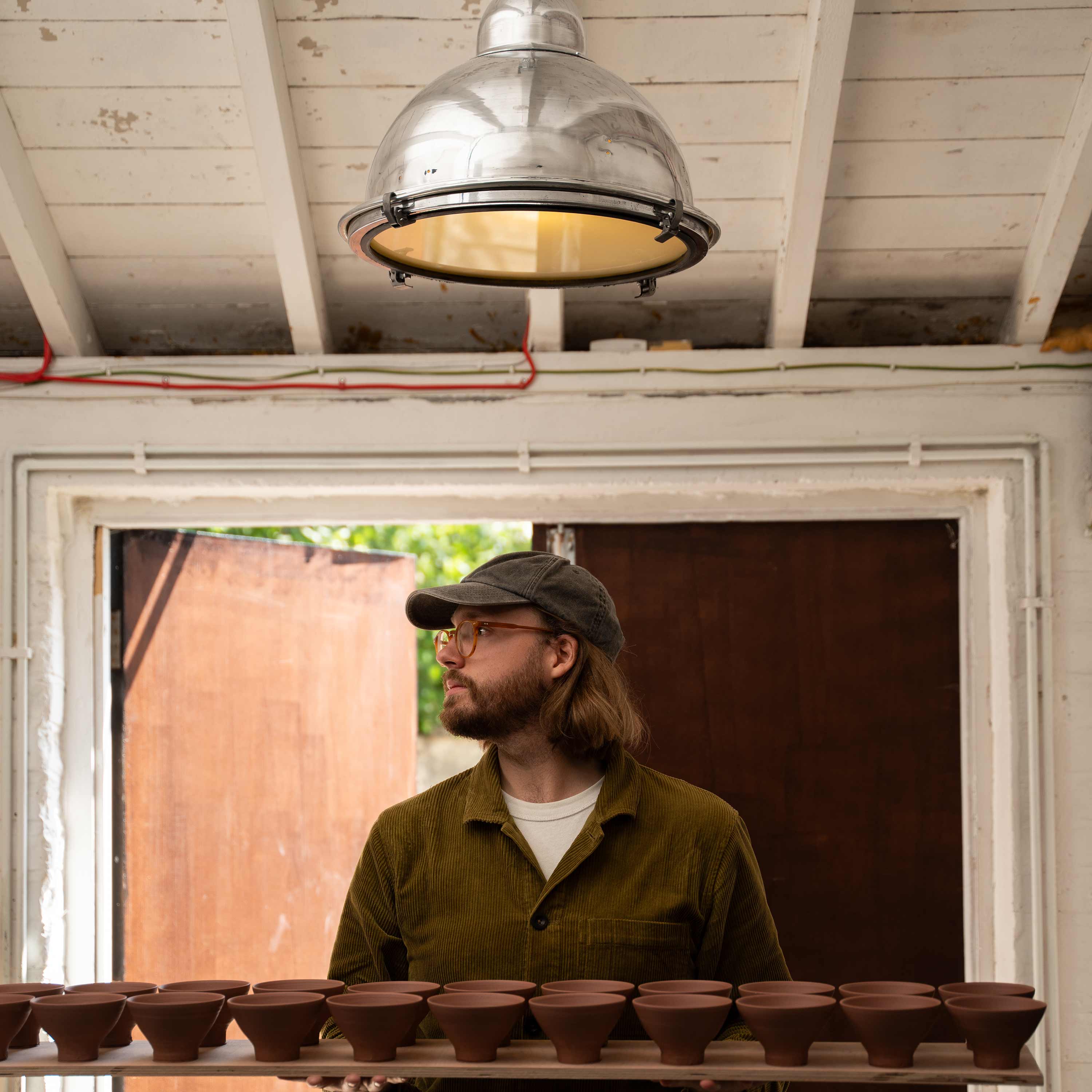
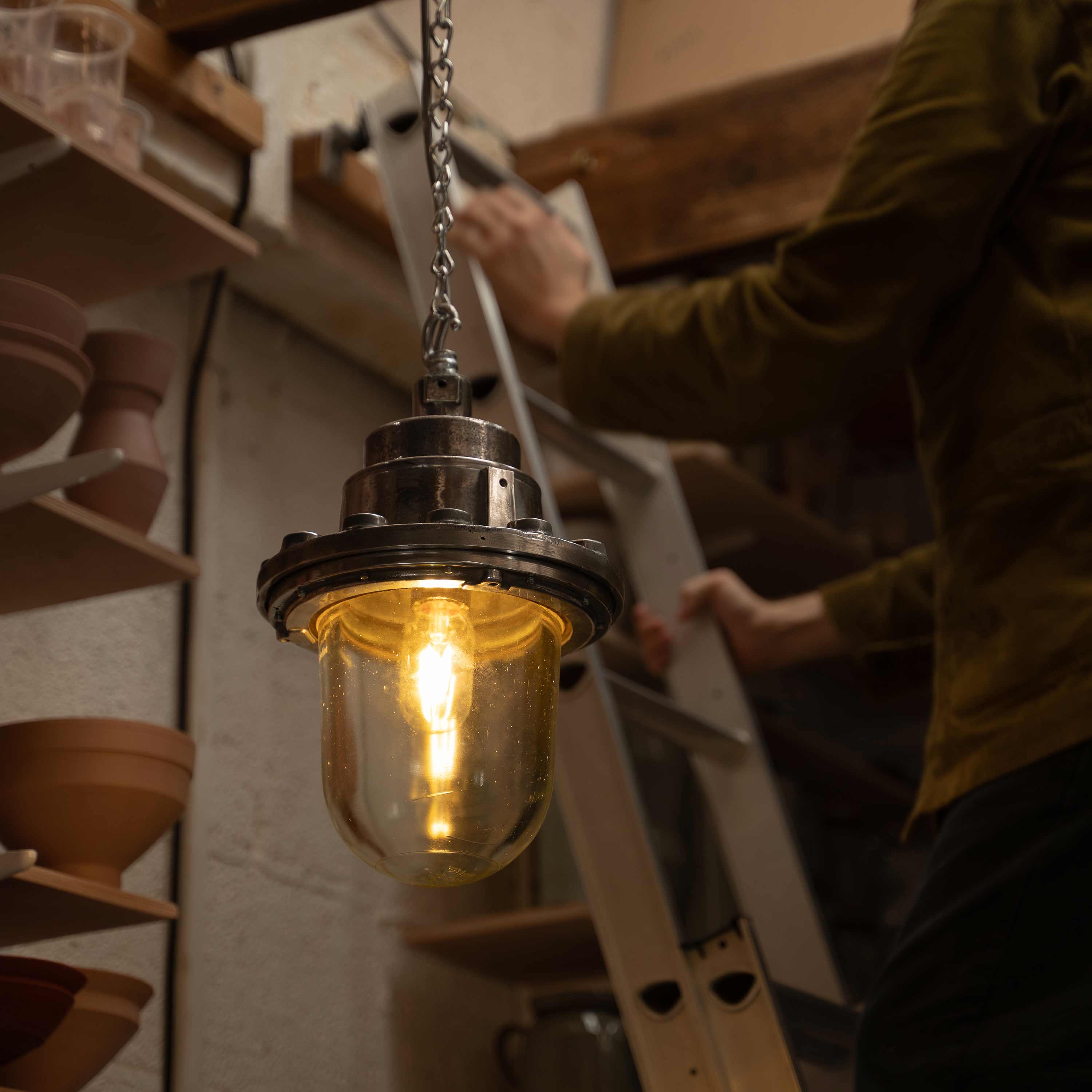
You might also like
Czech Bohemian glass: Tracing the origins of a collector’s piece
Salvaging our vintage 1960s Bohemian glass chandeliers and pendant lights sets our lighting experts on a journey to discover more about the illustrious movement.
Lighting HistoryJourney to the Bauhaus
Join us on a design pilgrimage to the heart of the Bauhaus, as we uncover the movement that left a lasting impact on industrial and interior design, including many of the vintage lights we salvage and restore today.
Lighting HistoryIn conversation with Florian Gadsby
As we gear up to launch our Artist’s Edit collaboration with Florian Gadsby, we caught up with the London-based ceramicist to talk about the joy of vintage, and how his transparent approach to craftsmanship has earned him millions of fans.
skinflint Meets







